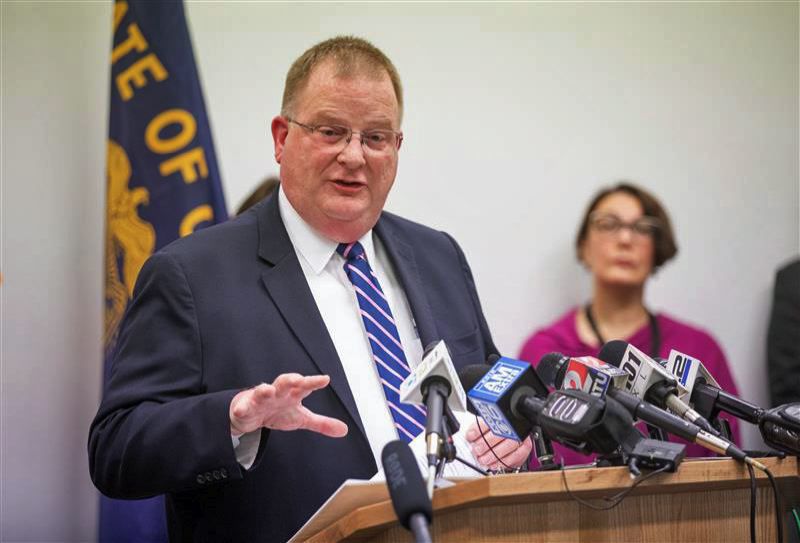Oregon hits new record in COVID-19 infections
Published 12:00 am Thursday, June 11, 2020

- PMG FILE PHOTO - Oregon is seeing a spike in new COVID-19 cases, but Pat Allen, Oregon Health Authority director, said that was expected as many counties have begun lifting quarantine restrictions.
Oregon reported a new record for COVID-19 infections on Thursday, June 11, as health officials cautioned the phased “reopening” of the state depended on residents not returning to pre-pandemic patterns.
“I am nervous that people think moving into Phase 1 or Phase 2 is going back to the way things were,” said Oregon Health Authority Director Pat Allen. “Nothing could be further from the truth.”
Trending
The state reported 178 new positive cases of the virus on Thursday, surpassing the previous one-day record of 146 cases set just last Sunday. Oregon has reported 5,237 cases since March.
Two more people died, bringing the total to 171. The fatalities were identified as a Clackamas County woman, 84, and a Yamhill County man, 66.
The majority of new cases were in the Willamette Valley, with 47 of the 178 new positive cases in Clackamas, followed by 43 in Multnomah, 34 in Marion and 15 in Washington counties.
The other cases included nine in Lincoln County; six in Yamhill County; four each in Umatilla and Polk counties; three each in Jefferson and Lane counties; and two each in Crook and Lake counties. Deschutes, Clatsop, Hood River, Union, Wallowa and Wasco counties each reported one case.
Allen said the state expected the numbers to rise as the emergency restrictions put in place in late March to slow the spread of the highly contagious virus are being partially lifted.
“The question has always been: Can we manage that in a way that doesn’t prevent the cases from going up but prevents it from overwhelming our systems?” he said.
Trending
Phase 1 reopening, allowing some restaurants and other businesses to reopen, was approved for 31 of the state’s 36 counties in mid-May. Multnomah County has been expected to go to Phase 1 this Friday, but the state had yet to OK the transition.
Marion, Washington, Clackamas, Hood River, Lincoln and Polk counties are still under Phase 1.
On June 5, the state said 29 counties could move into Phase 2, which allowed for larger crowds, more travel and opening of theaters, bowling alleys and the return of some workers to their offices.
Allen credited an increase in testing and tracing the contacts of those with infections with part of the increase in numbers.
“Much of the testing going on is focused on higher risk areas, like long-term care and high-density work environments.”
Allen said workplace outbreaks, such as Pacific Seafood Co. in Newport, have caused the numbers to rise.
The U.S. Centers for Disease Control and Prevention reported Thursday that there have been 2 million cases in the United States, with 113,000 deaths.
While much of Oregon has moved into Phase 2, nearly half of Oregon’s 4.3 million population live in counties that are lagging behind.
Allen said that, so far, the mass Black Lives Matter demonstrations in Portland and smaller marches in other Oregon cities have not shown an increase in infection rates. Allen said health officials would continue to monitor the numbers. People who are infected with COVID-19 can go two weeks before manifesting symptoms such as fever and shortness of breath.
Allen said there were three scenarios going forward:
• If the growth in infections remains under 10%, the number of daily new cases would remain around 100, a manageable total for the health care system. The reopening process could continue to move forward.
• A rate of up to 20% would mean infections could rise as high as 270 per day by July. The state and counties would have to review why the numbers are up and take action to bring the growth down.
• If the numbers rise by more than 30%, Allen said health officials worry about an uncontrollable growth in the virus that could overwhelm the health care system, especially hospitals. Reopening measures would have to be curtailed or reversed.
“We don’t see evidence of that kind of trend emerging,” Allen said.





